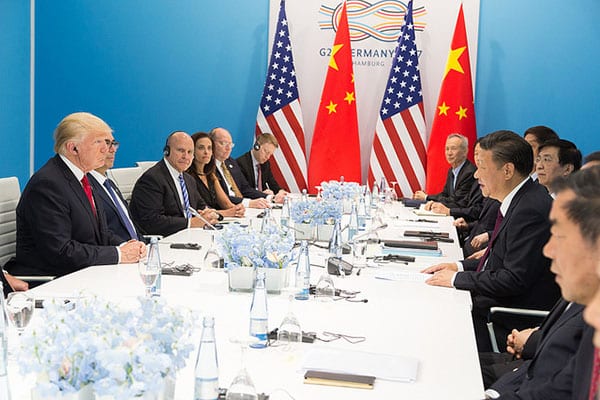
The US president, Donald J. Trump, has extended the deadline given to the European Union (EU) by one month, until the beginning of June, before applying the announced tariffs on steel and aluminium imports, which he claims represent a threat to national security. This has allowed for the intense negotiations of the past few weeks to proceed, with the EU pushing for a permanent exemption from the tariffs while the US seeks to use its protectionist threat to secure trade concessions in other areas.
Both trade giants are, in fact, playing what is known as ‘chicken’, poising for a head-on collision unless one of the two moves aside first. So far, neither of them appear to be batting an eyelid, the balance of power being very even, unlike with the US and South Korea (where the US strategy of wielding threats paid off), or the US, Canada and Mexico, in which case the Trump Administration is likely to end up renegotiating NAFTA, provided it does not ask for the impossible.
The EU will not bow to Trump’s bullying tactics, but would be prepared to broach the issue at the forefront of the United States’ trade concerns: its bilateral trade deficits caused, to a large extent, by high-end German car exports that enter the US market with lower tariffs than those applied to US-manufactured cars sold in the EU.
Obsessed with cutting its bilateral trade deficits with the countries generating the heaviest (Germany, China, Mexico, Japan or South Korea, amongst others), the US fears that without pressure and threats, the EU will not agree to sit down at the negotiating table. It is also seeking to take advantage of the internal contradictions within the EU, where Germany is more likely to make concessions, given its exporter profile, whereas France, which has less to lose, is less likely to budge.
The European Union has, however, made it clear that it is not prepared to negotiate under duress. In its view, the claim that American imports of European steel and aluminium pose a threat to the United States’ national security, given that EU member states have always been military allies and geostrategic partners of the US, is ludicrous, and it would consider appropriate trade counter-measures should the US stick to its guns.
The future of the WTO and trade relations with China
The current trade dispute, in which relatively little is ultimately at stake in terms of quantities (steel and aluminium imports amount to a mere 2 per cent of total imports into the US), is being played out against the backdrop of two more far reaching issues: the viability of the World Trade Organisation and how to tackle trade with China.
Regarding the WTO, the EU and US positions are diametrically opposed. The US has been boycotting the institution for a year, since opposing the appointment of judges to its dispute resolution mechanism, then refusing to accept any progress in the multilateral negotiations that took place at the Buenos Aires Summit in December 2017 and, finally, attempting to force the institution to rule on whether protectionism would be justifiable under the dubious grounds of national security.
Meanwhile, the EU, which perhaps has the most to gain from maintaining the rule-based multilateral trading system, is seeking to shore up support for the institution, building new alliances with countries inclined towards maintaining their markets open (it recently completed the update of its free trade agreement with Mexico, in addition to those reached with Japan and Canada and the deal it hopes to conclude with Mercosur in the course of the coming months). It is also devising a strategy based on counter-measures against the US that, if materialised, would preserve the legality of the WTO without weakening or discrediting it.
With regards to China, the situation is more complex. The US has announced unilateral tariffs on Chinese products amounting to US$50 billion, a decision it justifies by alleging that Chinese companies steal the intellectual property of US innovations.
This new chapter in the trade war, which China has already responded to with the threat of equivalent tariffs, which would have a far more devastating global impact than the steel and aluminium tariffs, places the EU in an uncomfortable position. On the one hand, it agrees with pressing China to review its policy, but on the other, it disagrees with the US tactic of doing so outside the bounds of the WTO. The transatlantic duo, which could hold far more sway over China, finds itself weakened by the aggressive unilateral strategy pursued by the Unites States.
It is still too early to know how the situation will pan out. While it is possible that the trade dispute may eventually die down, there are so many sides to it that, as thing stand, such an outcome seems unlikely. What does seem clear, however, is that the trust between the US and EU has been seriously compromised by Trump’s trade strategy. And rebuilding that trust will not be easy.
This post was translated by Equal Times.


